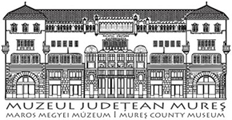Marisia - Maros Megyei Múzeum Évkönyve 33/4. (2013)
Book review
Peter Anreiter, Eszter Bánffy, László Bartosiewicz, Wolfgang Meid, Carola Metzner-Nebelsick (eds), Archaeological, Cultural and Linguistic Heritage. Festschrift for Erzsébet Jerem in Honour of her 70th Birthday, 2012, Main Series 25, 633 pp. with BW and colour illustrations ISBN 978-963-9911-28-4 Book review by Sándor BERECKI The work of Erzsébet Jerem is well known among specialist researching the Early and Late Iron Age of the Carpathian Basin and Central Europe. On the occasion of her 70th birthday celebrated in 2012 she was worthily greeted by her colleagues with a Festschrift study volume published in the Archaeolingua Main Series, whose founder and editor is Jerem herself. The Jerem-Festschrift has five editors, with most of them Jerem published studies or edited volumes and books earlier. The high quality, hardcover volume presents the well known signs of the series; the simple, no-frills front cover is memorable due to the pot from Hidegség. The structure of the volume follows the tradition of the Festschrifts by ordering the papers in the authors’ alphabetical order. The table of content, the German foreword and Jerem’s list of publications is followed by the 43 equally proportioned English and German studies of 55 authors. In spite of the bilingualism of the studies in the case of the volume’s title the editors opted for the English version. Finally, the studies are followed by the list of contributors and the list of the publications of the Innsbrucker Beiträge zur Kulturwissenschaft respectively Archaeolingua. The contents of the studies are connected mainly to Jerem’s main research areas, however among the contributors researchers reporting on other historical periods also occur. The volume starts with a study in toponymy (Anreiter), while further papers examine several early Neolithic phenomena (Bánffy-Sümegi), the Late Copper Age wagon models (Bondár), the prehistoric war chariots (Burmeister-Raulwing), the Early Bronze Age settlement structure (Fischl-Rebenda), the regional connections from the Early and Middle Bronze Age (Kiss), the Bronze Age bronze tools (Hansel et al), settlements (Kulcsár), fortifications (Karl-Waddington), cultic artefacts (K. Kaus-M. Kaus) and mining (Tomedi-Töchterle), a Roman burgus (Redő), Roman rhetorician and rhetorician schools (Dobesch), onomastic (Stifter) and montan ARCHAEOLOGICAL, CULTURAL AND LINGUISTIC HERITAGE Festschrift for Erzsébet Jerem in Honour of her 70,h Birthday Edited by PETER ANREITER, ESZTER BÁNFFY, LÁSZLÓ BARTOSIEWICZ WOLFGANG MEID and CAROLA METZNER-NEBELSICK ARCHAEOLINQUA archaeology and mining (Klemm), or the origins of the Hungarian word asszony (Janda). As it was expected, the majority of the papers refer to the Early and Late Iron Age. The topics are diverse, both the theoretical and analytical methods and papers combining both approaches occur. The papers referring to the Early Iron Age report about the ornamentation of the pottery from the Hallstatt period (Tarpini), the northeast Hungarian fortifications (C. Metzner-Nebelsick), the connections in the period with the Balkans (Vasié), the unmodified stone inventory of graves (Arnold), the interpretation of warrior representations (A. Eibner), the proto-Celts (Stöllner) or the myths and legends of the period (C. Eibner). The studies about the Late Iron Age focus on the Celtiberians from the second half of the first millennium (Arenas-Esteban), an Etruscan grave from the 3rd century BC (Lang), the functionality (Schwellnus) and chronology (Zeiler) of vessels from the Early and Late Iron Age, the archaeological evidence of Gaul and Celtiberian MARISIA XXXIII, 2013, p. 317-318.
